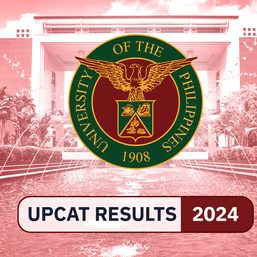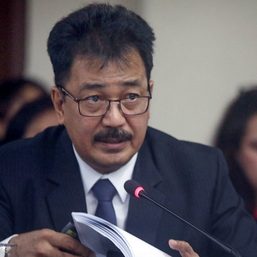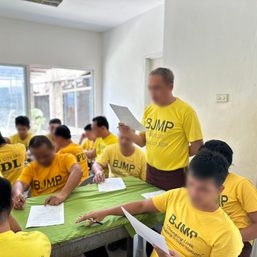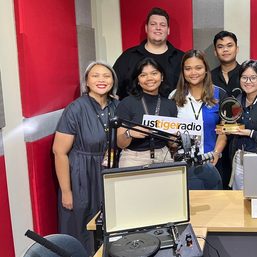SUMMARY
This is AI generated summarization, which may have errors. For context, always refer to the full article.
![[ANALYSIS] How ready are our basic education schools for the 2020 school opening?](https://www.rappler.com/tachyon/2020/07/tl-basic-education-new-normal.jpg)
Basic education schools in the Philippines are scheduled to open no later than August 24, 2020 with a major difference – there will be no face-to-face classes in areas where the COVID-19 pandemic infection rate is high and limited face-to-face classes elsewhere.
That means that education services will take place in one of 4 ways:
(a) Face-to-face (where allowed but in lesser class sizes to allow for physical distancing);
(b) Distance learning (children learning away from schools but connected to teachers either online, through some form of social media app, or through learning packets delivered to learners and used for remote learning);
(c) Blended learning (a combination of limited face-to-face and distance education where students do most of their work to learn on their own); and,
(d) Homeschooling (where the home is the place of learning, the parent is the teacher, and the set-up is independent of any school institution).
In the long term, face-to-face learning structures will have to be in smaller class sizes to accommodate social distancing.
This will be a new arrangement for all basic education schools save for a handful of elite schools who already do some amount of online learning. For all public schools where 95% of all elementary students attend and 80+% of all high school students are enrolled and most nn-elite private schools, this form of distance learning will be a new experience forced by the realities of this pandemic. The learning curve will be very steep. (READ: [ANALYSIS] Don’t confuse schooling with learning)
There are a number of daunting challenges that need to be addressed and overcome for distance education to be efficiently and effectively delivered:
- Pedagogy
- While the curriculum (the subjects comprising a course) is the same whether classes are face-to-face, remotely delivered, or through homeschooling, the Pedagogy (the method and practice of teaching) is going to be different for each.
- Think of the difference between having a meeting where all participants are in the same room and a meeting via Zoom or Teams where all participants are plugged in remotely. Participating in the latter requires different attentions, protocols and methods of managing meetings. (Think about how much more tiring participating in such online meetings are than in face-to-face meetings.)
- Teaching such distance classes will require new methods and practices.
- In the same way, keeping children engaged over long periods of time without physical activity to break up the learning day will be a major challenge, especially for younger children. How to engage children creatively in Learning, particularly distance learning under a new normal?
- One major challenge: Distance education of children with disabilities or slow learners.
2. Technology
- What are effective technologies to deliver educational content and materials? What technologies, whether high tech or low tech, work best in distance education?
- Even in face-to-face learning, the question of technology revolves around how to engage students in their own self-learning (i.e. self-discovery).
3. Preparedness of stakeholders for the new normal of distance education
- How prepared are students, teachers, school administrators and parents for distance learning? Distance learning will require a different mindset for all stakeholders.
- For students, how will they cope with longer periods of not being with classmates for physical and social interaction?
- For teachers, how to manage the stresses of teaching and student learning from a distance?
- For parents, how to manage the additional new responsibility of children “going to school at home”?
One critical concern to look out for in this new schooling environment: The menatal health of teachers and students caused by anxiety.
4. Material resources
- There will be a major shift in logistics for education as education services shift from classroom-based to distance learning (whether online or through learning packets).
- Who bears this cost?
- Who participates in this new requirement?
<h1>The learning continuity plan</h1>
To prepare for this “new normal,” DepED prepared a framework called a “Learning Continuity Plan (LCP).”
In a series of Zoom meetings and late evening exchanges with Regional Director Malcolm Garma (NCR), I had a chance to find out more about DepED’s approach to addressing this new normal.
Malcolm is a second generation regional director in DepED. His father was a regional director of DepED two decades earlier when I was with the Department. He was a Bridging Leaders Fellow at the Asian Institute of Management (School for Development Management) when I first met him. At that time, he was an assistant superintendent in Central Luzon.
Our discussions about his region’s LCP focused on framework and structure – what the regional office provided the schools division. It was the role of the schools division to work with their schools to operationalize this framework into school improvement plans (SIP) addressing this new normal.
I first heard the term “Learning Continuity Plan” from Undersecretary Diosdado “Dads” San Antonio who himself was once a regional director. The LCP has become standard thinking in the Department and speaks of the level of professionalization and systemic thinking of the Department over the last two decades. In the reports I have read, each region has laid out an LCP framework for schools divisions and schools to follow.
“In the LCP for NCR,” explained Director Garma, “we take into consideration the school context and the learners’ context. The school context is about the health status of teachers, the readiness of principals and supervisors to manage multiple learning delivery modalities, the availability of learning resources and materials, and teachers’ readiness and capacity to facilitate multiple learning modalities.
“The learners’ context, on the other hand, is about students’ capacity to complete self-directed learning tasks, their access to learning resources and technology, the support of parents at home and of their community, and the capacity to guide learners in understanding lessons delivered remotely.”
Distance learning is delivered through what is called a modular home study program. Not all learners are equipped for online learning, said Garma. Not all learners and teachers have laptops, tablets, or desktops. A survey by DepED nationwide on how best to deliver educational content revealed that more learners (74%) expect to understand lessons using modules versus 58% for lessons done online. More households have television sets (82.7%) than internet (17.7%).
The consideration then of DepED was for low tech, low-cost learning modalities that would promote inclusivity versus the digital divide.
<h1>Different roles in the LCP</h1>
In the LCP framework, the Regional office sets learning targets based on the Minimum Educational Learning Competencies (MELCs). Director Garma explained that these LCPs should be doable and practical as home-based performance tasks following the five C’s in learning outcomes (Critical thinking & problem-solving, Communication, Collaboration, Citizenship (global and local), and Creativity).
The role of the Division office is in instructional designing and the adoption of the instructional design framework to the local learning context. The Division Office takes an inventory of all available learning materials in the division schools and oversees the production of modules needed for distance learning.
The production and distribution of student learning packets will be a huge supply chain operation in every division or large school district. Here, LGU support is critical in terms of packet production, distribution and retrieval.
The Division Office is also critical in doing instructional supervision of schools and teachers. When the school year begins in earnest and packets for distance learning go back and forth between schools, teachers, students and homes, Division Offices will have to see that this operation moves efficiently and effectively. This is where a lot of stress can be created and where stress is constantly generated, there is the possible problem of mental health breakdown whether this be among teachers or students or both. Learner, teacher, and school readiness profiles becomes important to identify possible areas of stress.
<h1>Tools for learning delivery</h1>
In the LCP delivery system for distance learning in NCR, Regional Director Garma’s region, DepED is preparing what could go into learning packets for students. These include the following items, in general, but may vary from division to division depending on the LGU assistance:
- Learning modules (delivered weekly), Worksheets
- Text-base synchronous classes through Facebook Messenger (off-line platform)
- Digital off-line and online sources of reference materials (DepED Commons, an online data-base of educational materials is available to all stakeholders and includes a curated list of various educational websites and educational materials)
- Education TV and radio media sources and links
- Lesson guides for parents
- Guidelines in utilizing learning modules and online video teaching apps
- Schedule of online platforms with contact numbers of teachers
- Notebooks, pad paper, crayons (for kindergarten, this includes toys from the toy library [depending on the Division])
- For older grades: A dictionary and other school supplies
DepED is also working to develop modules to help parents and guardians on reading and special education.
DepED says that the system assumes a gradual shift from modular to digital distance learning modalities. In the long term, blended learning will be the preferred modality for teaching, instruction and learning.
This will require a lot of resource generation. Worksheets will replace traditional textbooks which are short in terms of exercises.
For teachers and students, digital hardware and software will have to be made more available.
This additional cost will be beyond the reach of many parents. One possible source of funds is the Special Education Fund (SEF) of local governments (LGUs) which are generated from 1% of real estate taxes to be used for local education. For larger LGUs, this is a significant amount that can be used to fund specific education needs of an LGU. For the majority of LGUs, however, the SEF is much smaller based on its real property tax valuation.
The implementation of the LCP is to be guided by the DepED minimum health standards in the workplace (which are still to be released).
Certain LGUs have gone further based on their resources. In Pasig city, Mayor Vico Sotto has said that tablets or laptops with video lessons and digitized worksheets will be provided to school children. How universal this will be and to what grade levels is not yet clear. In Mandaluyong City, some 13,000 tablets will be distributed to students in identified schools as a pilot program to be studied before full roll-out is realized in the future.
Delivering the learning packets to all children in their homes and retrieving these weekly or bi-weekly is a major logistics operation. On paper and in some NCR divisions, simulation exercises have been carried out to see how efficiently packets can be distributed and retrieved.
In Navotas, every child is to receive a “NAVO School-in-a-box” kit loaded with school supplies. Every week, each student is to get a learning packet of modules. Parents can come to the school on a schedule to pick up their children’s packet and drop off their children’s work for the week. There are a number of variations to this depending on the parent’s situation. There is a house depot system (multiple packets delivered to a designated neighborhood depot where it can be picked up by parents. The Navotas LGU set up Aral-padala where LGU and barangay workers deliver kits to households. Other LGUs claim they will use courier delivery services such as LBC to do the same.
In Navotas, a simulation exercise was conducted for a kindergarten, an elementary school, and a high school to test the system and to involve parent-teacher associations (PTA) and barangay officials in the distribution of modules and materials. The simulation included having small groups of children work through the modules and included some street families living under tarpaulins on sidestreets.
<h1>Issues and challenges</h1>
This new normal in distance education poses a number of major issues and challenges. (READ: [ANALYSIS] School opening 2020: Immediate concerns, longer-term structural reforms)
First, this has never been done in the public education system and now it will have to be rolled out in grand scale. The simulation exercises are good but DepED will not have the time to stress-test the system. If things do not work as efficiently as planned, the bottlenecks will stress parents, teachers and students and learning will suffer.
Second, parents will have to play a bigger role in distance learning. Learners without supportive parents or who experience abuse at home will be disadvantaged or even left out.
Third, distance learning will need community assistance for slow learners. Navotas National HS has a program called “Tutor A Learning Child” where volunteers serve as para-teachers and foster educators to children in difficult circumstances. Projects like these will need to be done in scale.
Four, there are supply chain concerns that will need constant fine-tuning: Module development, quality assurance, reproduction of modules, preparation of learning packets, and distribution of learning packets continuously every week of the school year.
Five, curriculum and pedagogy need to be continually refined for distance learning. This includes the time allotment of learning areas using the virtual classroom (parents to know when to tune in) and even the work loading of teachers.
Six, online technology concerns of which poor internet connectivity is top of mind.
The tentative date of release of the DepED health protocol to guide teachers and parents is still to be known and this uncertainty needs to be addressed by DepED and DOH.
Nothing about this “new normal” will be easy. A good framework and planning is a good first step. But good execution at scale will be critical and having the agility to make adjustments along the way will be crucial. – Rappler.com
Juan Miguel Luz is adjunct faculty at the Asian Institute of Management and former Undersecretary, Department of Education.
Add a comment
How does this make you feel?


![[Time Trowel] Evolution and the sneakiness of COVID](https://www.rappler.com/tachyon/2024/02/tl-evolution-covid.jpg?resize=257%2C257&crop=455px%2C0px%2C1080px%2C1080px)







There are no comments yet. Add your comment to start the conversation.